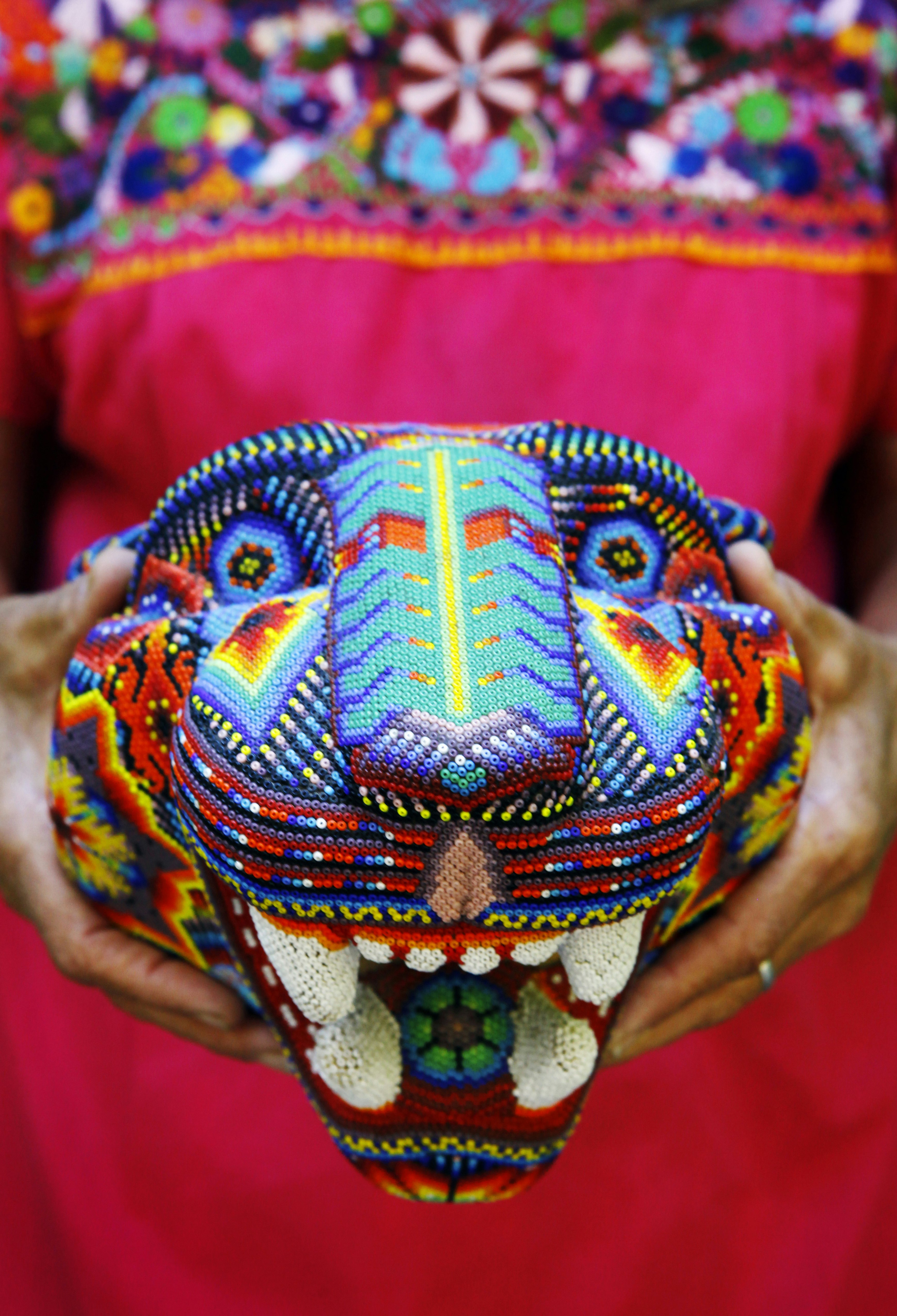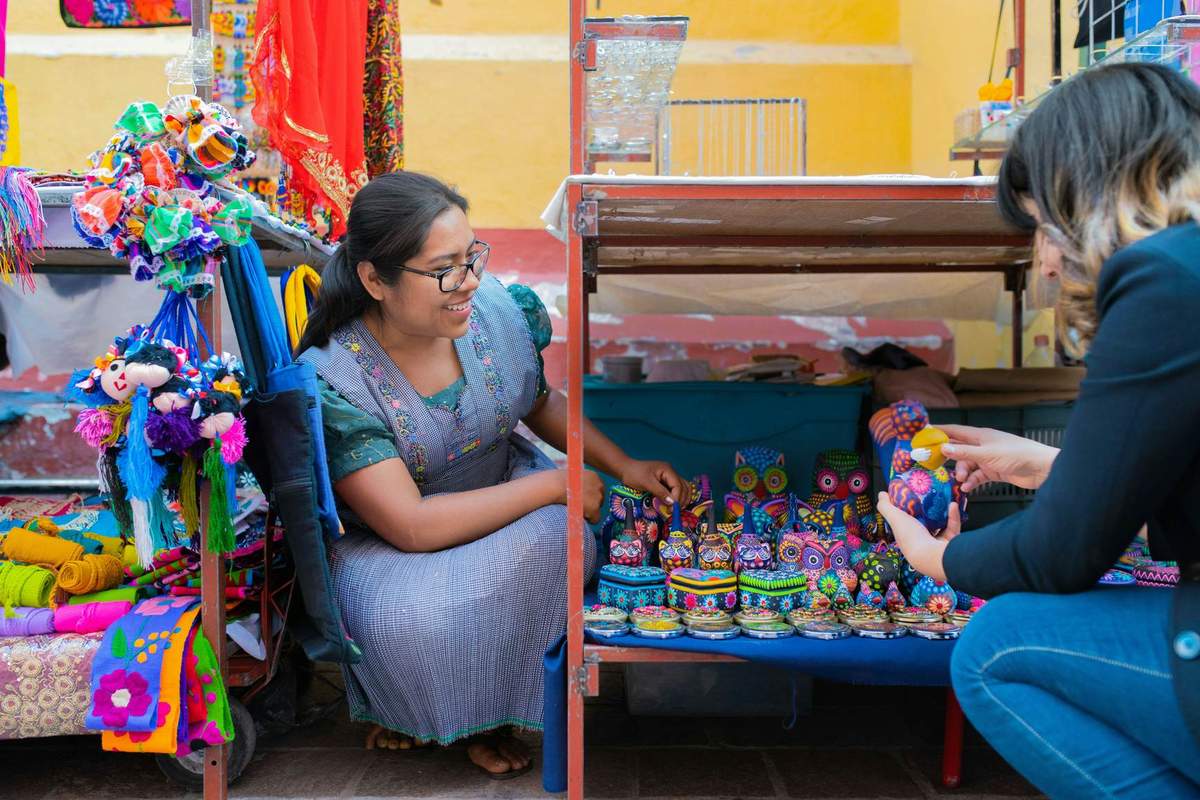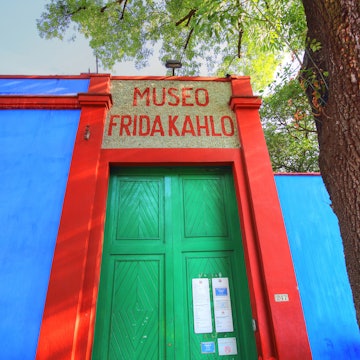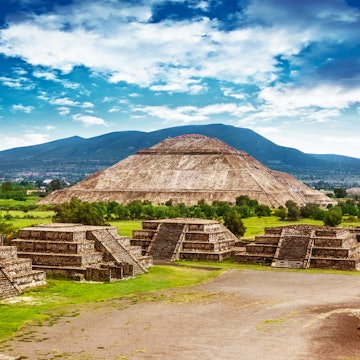
Everything you need to know before shopping for Mexican folk art
Oct 12, 2019 • 4 min read

Mexico boasts a vibrant blend of cultures, drawing influence from its considerable Indigenous presence, the remnants of Spanish colonization, and the traditions born from their intermingling. Far from a monolith, you’ll find different types of folk art depending on which part of the country you visit.

Alebrijes - Oaxaca
Alebrijes technically got their start near Mexico City in the 1930s when Mexican artist Pedro Linares saw the fantastical figures in a fever dream. Upon recuperating, he began creating them from memory, eventually drawing the attention of artists Diego Rivera and Frida Kahlo.
The imaginative creatures gained popularity in the Oaxaca valley where Arrazola native Manual Jimenez innovated Linares’ paper-mache alebrijes and began carving them from a local wood called copal. Alebrijes made in this style can still be found in Arrazola, San Martín Tilcajete, and La Unión Tejalapam, where they represent a significant part of the local economy. Now alebrijes are exported around the world and curious tourists have the opportunity to tour local galleries to see how they’re made.

Arbol de la Vida (Tree of Life) sculptures - Metepec
Tree of life clay sculptures are popular in the central highlands of Mexico, most notably in the city of Metepec. The area has a long history of pottery and ceramic traditions that date back to between 1800 and 1300 BC Olmec influence led to the painting of these ceramic figures and around 800 A.D., religious symbolism was depicted on the figurines as part of the influence from Teotihuacan.
When Spanish conquistadors arrived in the area in the early 16th century, they destroyed many of the ceramics that upheld Indigenous belief systems and replaced them with images of saints and other Christian iconography. The tree of life was introduced in paintings and other art forms as a way of proselytizing Christian beliefs to the native population.
In present day, tree of life sculptures aren’t always associated with religion, but they often carry more general themes of renewal and death. Once a traditional wedding gift symbolizing abundance and fertility, nowadays tree of life sculptures are exported around the world and used for various decorative purposes. While tree of life sculptures have spread to other regions, Metepec stands out for their brightly colored depictions.

Talavera Poblana - Puebla
Named after the Talavera de la Reina pottery that hails from the Spanish city of Talavera de la Reina, Talavera pottery was introduced to Mexico by the Spanish in the 16th century. This style of pottery flourished in the state of Puebla where an abundance of fine clays were available and newly established churches and monasteries created high demand for tiles.
The golden age of Talavera pottery occurred between AD 1650 and 1750, but the trade diminished after the Mexican War of Independence when workshops dwindled down to just eight in the entire state of Puebla.
Artists and collectors revived the craft in the early 20th century and now significant collections of Talavera pottery exist in Puebla, Mexico City, and New York City. In the late 20th century, a law was passed protecting authentic Talavera pieces that employ original 16th century methods. Most commonly found in the city of Puebla, this style of pottery is often referred to as Talavera Poblana to distinguish it from its Spanish counterpart.

Silversmithing - Taxco
Prior to Spanish colonization, those living in the areas in and around modern-day Taxco would pay tribute to Aztec rulers with silver offerings. When Spain invaded the area in the 1530s, they wasted no time setting up silver mines and commercializing the trade. Silver mining thrived in the area for 200 years, but constant land conflicts led to the decline of the trade.
The local silversmithing industry was revived by William Spratling, an American silversmith and artist who arrived in 1931. Spratling repopularized pre-colonial motifs and trained local craftsman in his workshop. More workshops opened and the town once again established itself as a center for high-quality silver pieces.

Huichol Art - various regions
Huichol art describes the artistry of the Indigenous Huichol people who live in the states of Jalisco, Durango, Zacatecas and Nayarit. While Huichol art varies in style and type, it most often refers to intricate yarn paintings and objects decorated with tiny, colorful beads. It’s a practice that dates back many years, with Huichols using clay, shells, corals, seeds and other materials to make the ornate designs that serve as a form of religious storytelling. They are often seen in the form of jewelry and bowls, as well as masks and wooden animal features that can be hung around the home.
Huichol art has maintained its integrity partially due to the Huichol peoples’ relocation to the remote mountains of northern Jalisco and Nayarit upon Spanish arrival in the early 16th century. Some anthropologists believe that the Huichol have been able to retain their pre-Hispanic belief systems better than most Indigenous communities in Mexico due to this isolationist strategy. Travelers will often find Huichol artwork in places like Guadalajara and Puerto Vallarta.















